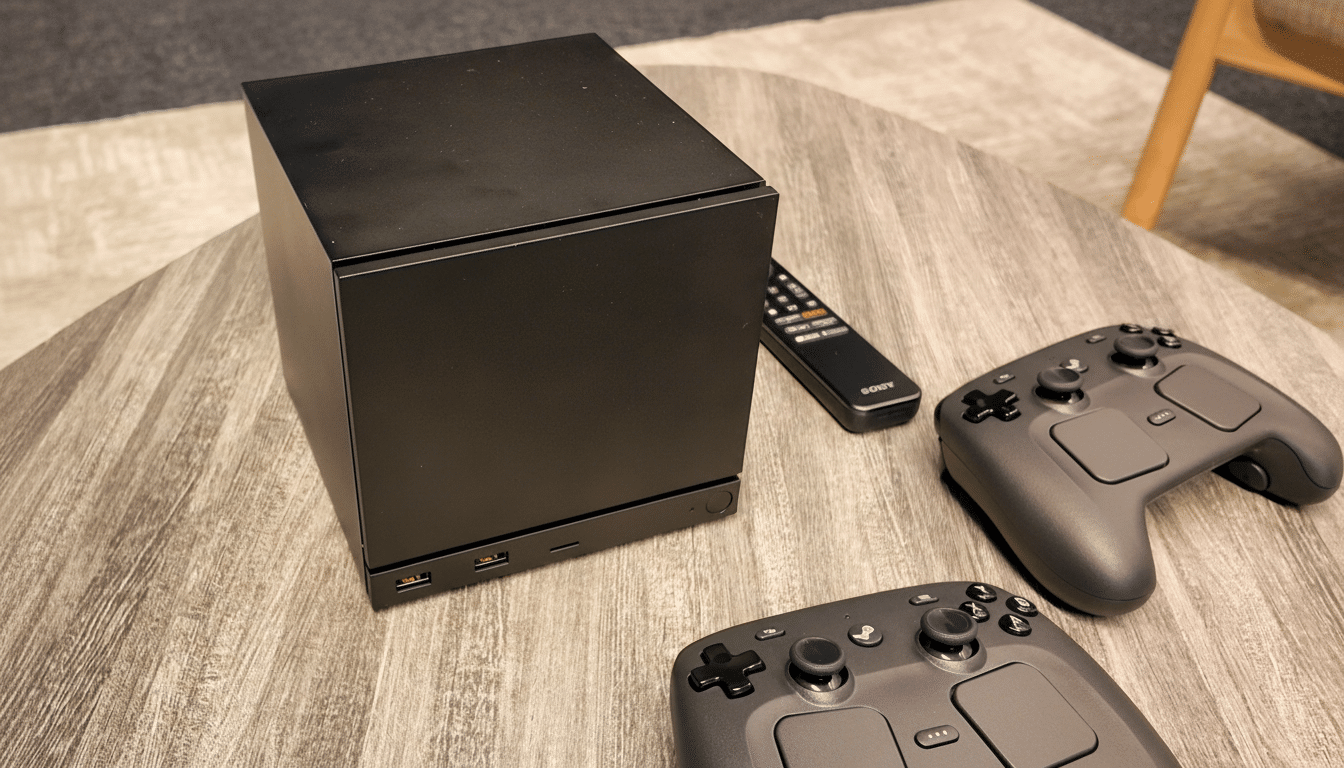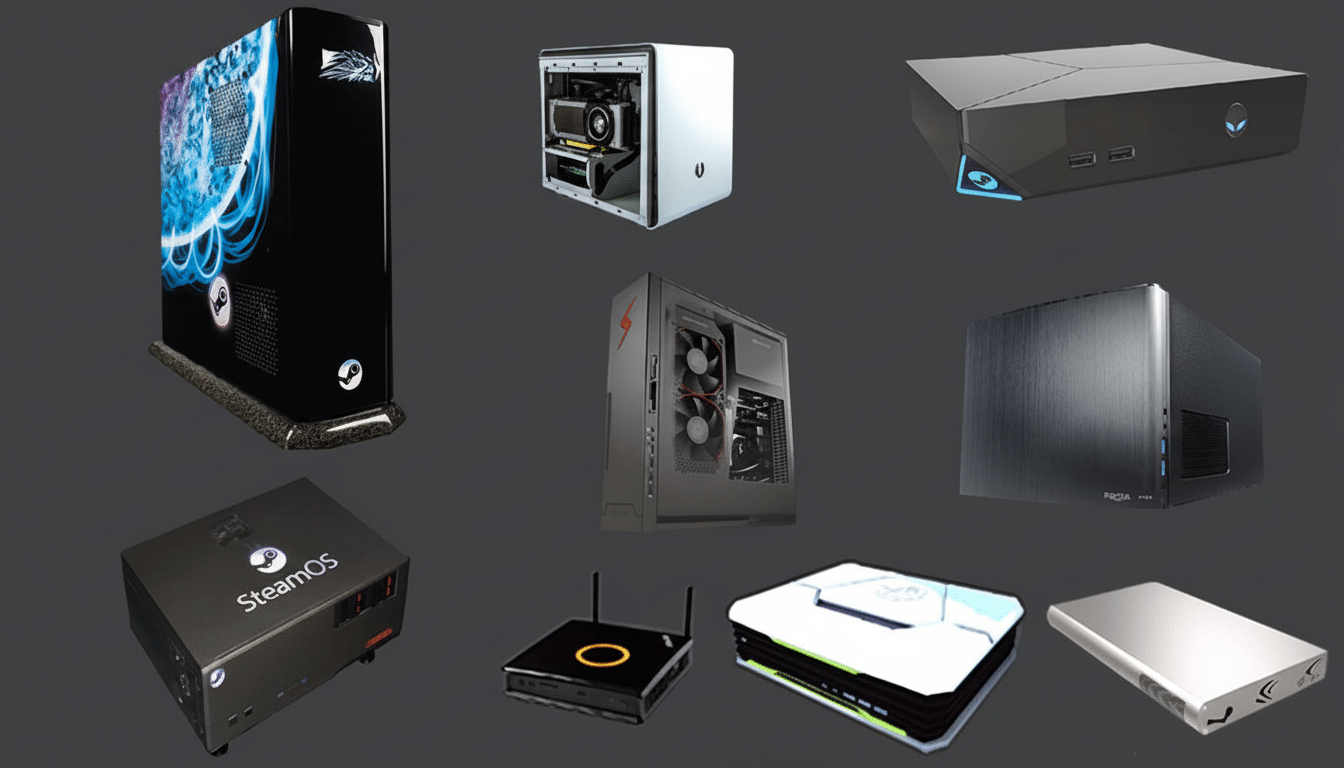Valve is the latest hardware vendor to weigh in on graphics memory, saying that 8GB of VRAM will be enough for its upcoming Steam Machines. The position flies in the face of people being loud online about 12GB to 16GB becoming the new minimum, but Valve says it’s testing its hardware against or surpassing approximately 70% of PCs currently active on Steam—a point based on platform-scale data, not forum folklore.
8GB Is Enough, Valve Says for Its Steam Machines
The company’s argument is a practical one, as well: Most gamers can’t get ultra textures and hefty ray tracing going at 4K anyway. Valve engineer Yazan Aldehayyat, speaking to the Tested podcast, said that with the new version of the system, “we’re gonna be pretty targeted at where we think the real audience is at, not necessarily this top sliver; our hope is these founder index.” It’s not surprising that Valve is going to go after high-efficiency 1080p and 1440p play with AMD graphics and built-in FSR upscaling, rather than designing for edge-case scenarios.

That approach reflects the way the Steam Deck has found success. Despite modest specs on paper, Valve’s handheld achieves smooth frame rates with a bit of help from smart upscaling, sensible defaults, and developer hand-holding. The same philosophy—optimize around mainstream resolutions and settings—is again true of the choice to offer the card with 8GB for a living-room box.
What the Data Says About VRAM on Steam PCs
Valve’s own Steam Hardware Survey is the story. A whopping 67%+ of currently active PCs have 8GB or less of VRAM, and a surprising slice, over 10%, still operate on systems with only 1GB or less. All of which is to say that game developers are still aiming for memory footprints that don’t exclude most. It also implies that a well-tuned 8GB box works quite well for serving the plurality of Steam’s customers.
External reporting echoes this reality. TechSpot, PC Gamer, and others have continually demonstrated that a lot of popular games are more than playable (and enjoyable) with less than 8GB at 1080p or 1440p with medium to high settings. When VRAM-starved teeth do sink in, it’s typically because of ultra texture packs, high ray-tracing presets, or 4K targets—elements that are disproportionately aimed at more powerful rigs.
Performance Expectations and Tradeoffs for 8GB VRAM Systems
The need for VRAM increases with the resolution, size of textures, ray-tracing buffers, and modded assets. Recent releases all land in the 5GB–7GB range at 1080p and 1440p with medium to high textures. Factor in FSR upscaling and smart texture streaming and, normally, an 8GB pool is perfectly fine. Push that to 4K with max textures and ray tracing and certain games—Hogwarts Legacy or Indiana Jones and the Great Circle, let’s say—can drift over that line without a lot of aggressive upscaling or gutted settings.
It’s also important not to conflate VRAM capacity with general GPU performance. VRAM can, however, be more efficient with some games (and won’t change much, or even less, in others; system RAM does get affected by VRAM size, but it’s usually a few percent at most). A leaner VRAM pool is not only fine when compression changes stuff; the compression itself speeds things up, and so does smooth driver management over what gets where transparently. Engines that stream assets efficiently and don’t run away with allocation spikes can make 8GB feel much larger than it does on a spec sheet.

Valve’s own promise of 4K at 60fps “in every game” is heady stuff. In reality, the sweet spot for an 8GB Steam Machine is probably going to be 1080p high refresh or 1440p with a mix of medium and high settings and upscaling as necessary, which is in line with how most people’s behavior actually plays out—and some data from Steam.
Price Is Everything for a Mainstream Steam Machine
Value in hardware is typically a three-legged stool: performance, features, and price. When a Steam Machine with 8GB of VRAM can fit alongside consoles in the $500–$700 realm, it’s an easy sale for mainstream PC gaming on the big screen. If pricing inches over the $1,000 mark, that same 8GB pick will ultimately seem stingy compared to GPUs being hawked with 12GB or 16GB of memory, even if real-world gains are marginal when not playing at extreme settings.
Context matters here. The VRAM debate has been brought to the forefront once again with Nvidia’s recent GPU launches, packing 8GB of memory in midrange and some high-end models. Valve is essentially gambling that ecosystem and optimization will triumph over raw capacity in daily use.
What This Means for PC Gaming and VRAM Debates
Valve’s position shifts the conversation away from headline specs and back to experience. An 8GB Steam Machine wouldn’t work for everyone, sure, but if it can match or exceed the standard performance of most of today’s Steam PCs, as Aldehayyat indicates it might (along with keeping dev targets closer to the console midpoint), then you’re getting a wider market, less fractured dev considerations, and smarter use of memory budgets.
The takeaway: 8GB is not a future ceiling, but it’s a realistic floor for now. With the proper amount of upscaling and settings slider manipulation, Valve’s configuration should deliver where most people actually game—not chasing specs they don’t need.

